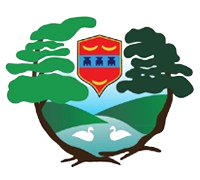DT
Intent
To create and develop enthusiasm and skills in design and technology in a variety of forms.
Implementation
EYFS children will be guided in their learning through four overarching principles for a unique child, positive relationships, enabling environments and learning and development. They will build a good foundation for igniting their curiosity and enthusiasm for learning, forming relationships and thriving at school through the Prime Areas of communication and language, physical development and personal, social and emotional development and the Specific Area of ‘Expressive Arts and Design’.
At Great Ponton the development of children’s artistic and cultural awareness supports their imagination and creativity. Children will have regular opportunities to engage with the arts, enabling them to explore and play with a wide range of media and materials. They will be equipped with specific vocabulary and a wide range of art and design stimulus, crucial for developing their understanding, self-expression, vocabulary and ability to communicate through the arts. They will learn how to safely use and explore a variety of materials, tools and techniques, experimenting with colour, design, texture, form and function. They will also share their artwork, explaining the process they have used.
For pupils with SEND, their personal targets will inform Design Technology planning to identify areas where they may need more help, practice and consolidation. It is important to focus on the pupils’ strengths and ensure all pupils, regardless of their SEN or disability, should have the opportunity to develop all the concepts within our curriculum. However, the approach to these concepts may have to be done differently with different groups of pupils.
Impact
Our Design Technology Curriculum allows pupils to learn, explore, experiment, take risks, improve and embed a range of artistic skills showing an outstanding progression across the different year groups, evidenced in individual sketchbooks. Achievements are celebrated in classrooms and corridor displays further developing children’s appreciation of their own and other’s artwork. Pupils will be involved in the evaluation, dialogue and decision making about the quality of their outcomes and the improvements they need to make. By taking part in regular discussions and decision-making processes, children will not only know facts and key information about art, but they will be able to talk confidently about their own learning journey and have a growing understanding of how to improve. Most importantly, we want children to have found and enjoyed a creative outlet – a means of self-expression and enjoyment.
